Yan Wan
Multi-Agent Reinforcement Learning Based Coded Computation for Mobile Ad Hoc Computing
Apr 15, 2021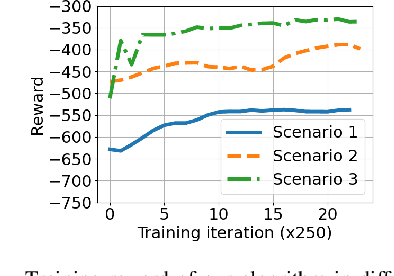
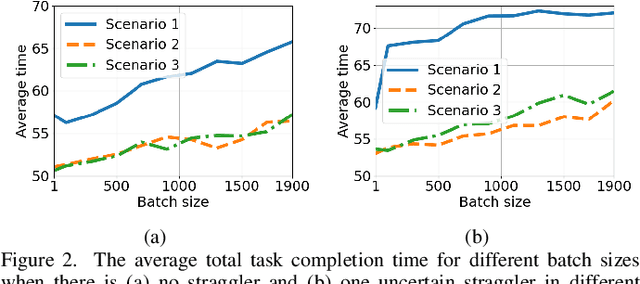
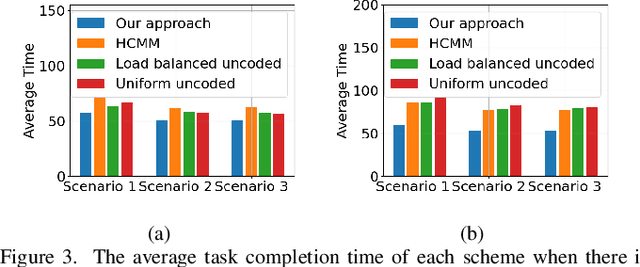
Abstract:Mobile ad hoc computing (MAHC), which allows mobile devices to directly share their computing resources, is a promising solution to address the growing demands for computing resources required by mobile devices. However, offloading a computation task from a mobile device to other mobile devices is a challenging task due to frequent topology changes and link failures because of node mobility, unstable and unknown communication environments, and the heterogeneous nature of these devices. To address these challenges, in this paper, we introduce a novel coded computation scheme based on multi-agent reinforcement learning (MARL), which has many promising features such as adaptability to network changes, high efficiency and robustness to uncertain system disturbances, consideration of node heterogeneity, and decentralized load allocation. Comprehensive simulation studies demonstrate that the proposed approach can outperform state-of-the-art distributed computing schemes.
Dynamic Distribution Pruning for Efficient Network Architecture Search
Jun 09, 2019



Abstract:Network architectures obtained by Neural Architecture Search (NAS) have shown state-of-the-art performance in various computer vision tasks. Despite the exciting progress, the computational complexity of the forward-backward propagation and the search process makes it difficult to apply NAS in practice. In particular, most previous methods require thousands of GPU days for the search process to converge. In this paper, we propose a dynamic distribution pruning method towards extremely efficient NAS, which samples architectures from a joint categorical distribution. The search space is dynamically pruned every a few epochs to update this distribution, and the optimal neural architecture is obtained when there is only one structure remained. We conduct experiments on two widely-used datasets in NAS. On CIFAR-10, the optimal structure obtained by our method achieves the state-of-the-art $1.9$\% test error, while the search process is more than $1,000$ times faster (only $1.5$ GPU hours on a Tesla V100) than the state-of-the-art NAS algorithms. On ImageNet, our model achieves 75.2\% top-1 accuracy under the MobileNet settings, with a time cost of only $2$ GPU days that is $100\%$ acceleration over the fastest NAS algorithm. The code is available at \url{ https://github.com/tanglang96/DDPNAS}
BigDL: A Distributed Deep Learning Framework for Big Data
Jun 25, 2018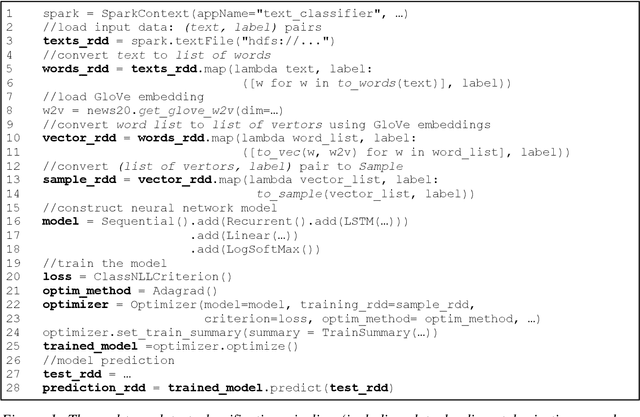
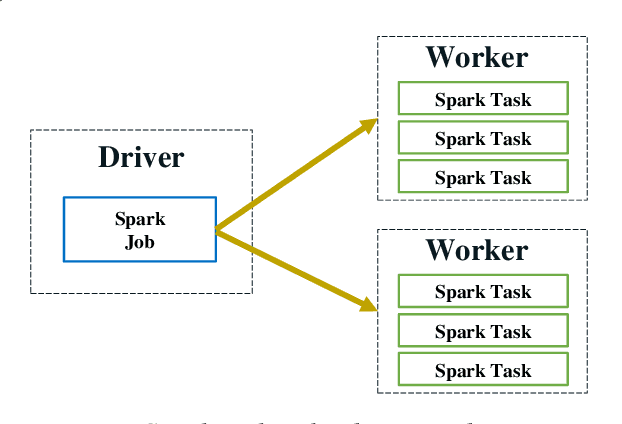


Abstract:In this paper, we present BigDL, a distributed deep learning framework for Big Data platforms and workflows. It is implemented on top of Apache Spark, and allows users to write their deep learning applications as standard Spark programs (running directly on large-scale big data clusters in a distributed fashion). It provides an expressive, "data-analytics integrated" deep learning programming model, so that users can easily build the end-to-end analytics + AI pipelines under a unified programming paradigm; by implementing an AllReduce like operation using existing primitives in Spark (e.g., shuffle, broadcast, and in-memory data persistence), it also provides a highly efficient "parameter server" style architecture, so as to achieve highly scalable, data-parallel distributed training. Since its initial open source release, BigDL users have built many analytics and deep learning applications (e.g., object detection, sequence-to-sequence generation, visual similarity, neural recommendations, fraud detection, etc.) on Spark.
Using experimental game theory to transit human values to ethical AI
Nov 16, 2017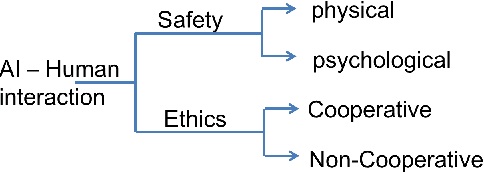
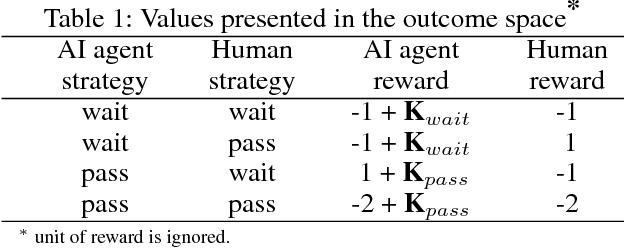

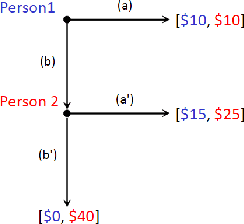
Abstract:Knowing the reflection of game theory and ethics, we develop a mathematical representation to bridge the gap between the concepts in moral philosophy (e.g., Kantian and Utilitarian) and AI ethics industry technology standard (e.g., IEEE P7000 standard series for Ethical AI). As an application, we demonstrate how human value can be obtained from the experimental game theory (e.g., trust game experiment) so as to build an ethical AI. Moreover, an approach to test the ethics (rightness or wrongness) of a given AI algorithm by using an iterated Prisoner's Dilemma Game experiment is discussed as an example. Compared with existing mathematical frameworks and testing method on AI ethics technology, the advantages of the proposed approach are analyzed.
Towards Empathetic Human-Robot Interactions
May 13, 2016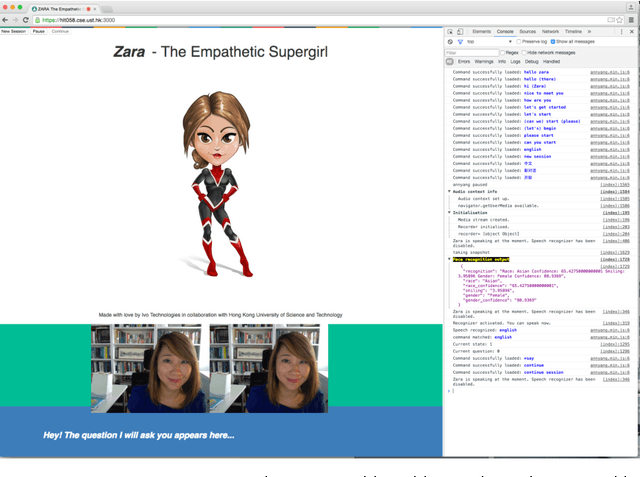
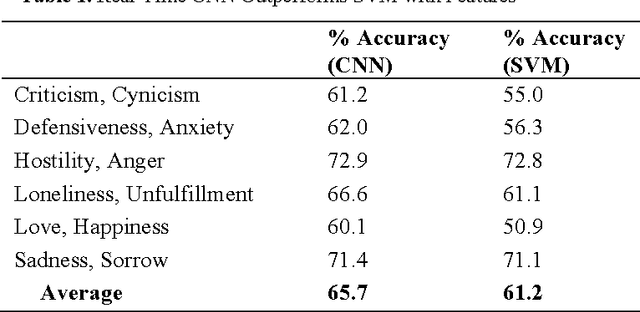
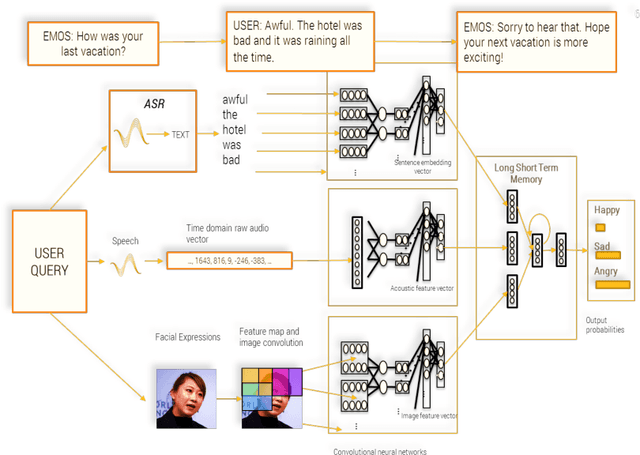

Abstract:Since the late 1990s when speech companies began providing their customer-service software in the market, people have gotten used to speaking to machines. As people interact more often with voice and gesture controlled machines, they expect the machines to recognize different emotions, and understand other high level communication features such as humor, sarcasm and intention. In order to make such communication possible, the machines need an empathy module in them which can extract emotions from human speech and behavior and can decide the correct response of the robot. Although research on empathetic robots is still in the early stage, we described our approach using signal processing techniques, sentiment analysis and machine learning algorithms to make robots that can "understand" human emotion. We propose Zara the Supergirl as a prototype system of empathetic robots. It is a software based virtual android, with an animated cartoon character to present itself on the screen. She will get "smarter" and more empathetic through its deep learning algorithms, and by gathering more data and learning from it. In this paper, we present our work so far in the areas of deep learning of emotion and sentiment recognition, as well as humor recognition. We hope to explore the future direction of android development and how it can help improve people's lives.
 Add to Chrome
Add to Chrome Add to Firefox
Add to Firefox Add to Edge
Add to Edge